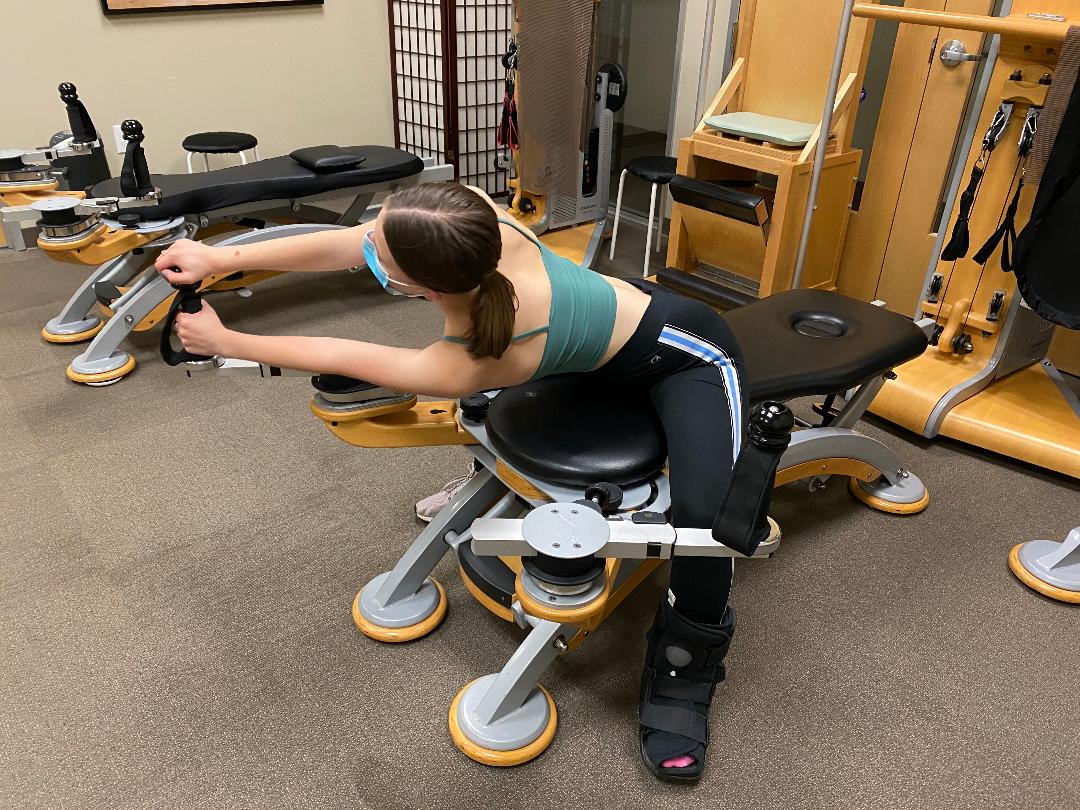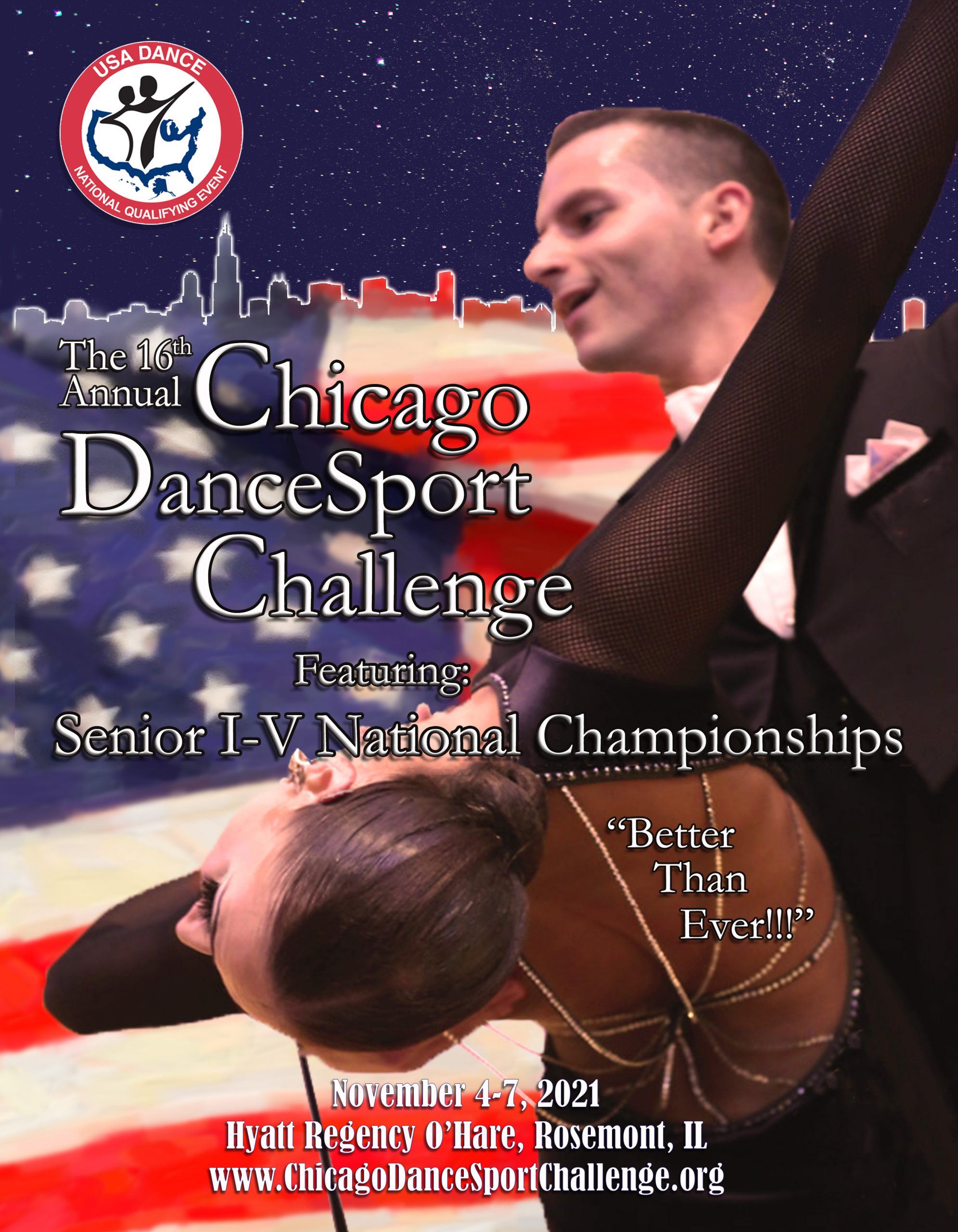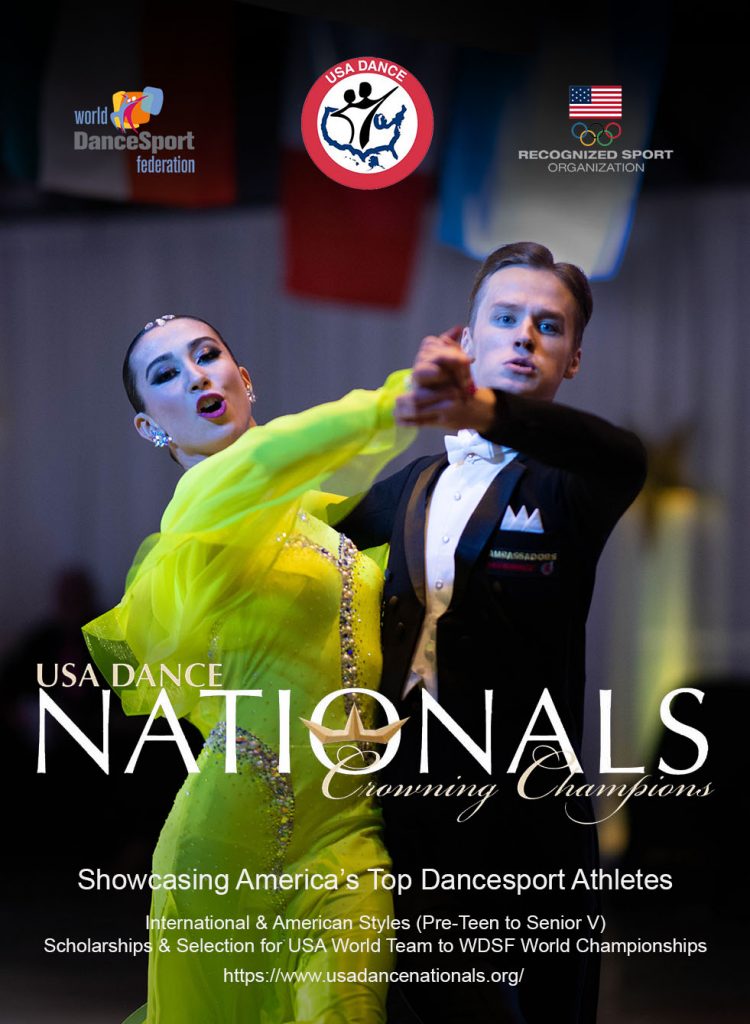DEPARTMENT
Health and Fitness
Dealing With Injuries
BY ALLISON GONZALEZ

Ballet dancer Sarah Hansen working on GYROTONIC® pulley tower using the handle unit
Photo by Allison Gonzalez
My first major injury as a professional ballet dancer was mid-season, in a rehearsal for “A Midsummer Night’s Dream”. I was dancing the part of “Hermia” in a rehearsal, slipped on a slick spot on the floor doing a pirouette on pointe and fell on my back. I didn’t realize how hard I fell and went back to dancing after a short break. I leapt into a split jete, arching my back to reach my head towards my legs and felt a huge pain. I had herniated a disc at the tender age of 29. I went to the doctor and chiropractor to start the process of assessment and healing and then a colleague brought me to her Pilates teacher in NYC. She said, “you have to have a stronger core, or you’ll keep getting injured.” This began my true recovery from my injury. I was able to safely exercise under the eye of an experienced instructor and return to my dancing both stronger and flexible. It also began my lifelong passion for the importance of cross training as an athlete.
Many dancers deal with injury in some form or another. These injuries have a twofold effect on most of us. Not only do we have to deal with the physical recovery from that injury, but we must deal with the psychological stress of not being able to dance. (To live is to dance, to dance is to live!) If you have never had an injury, well, congratulations! But you might want to read on so you can be sympathetic to your partner or fellow dancer who is injured and be prepared if that ever happens to you.
Injuries come in many forms for the dancer. It could be a torn meniscus, a pulled groin, or a broken foot. It could be back pain like a bulging disc. It might also be a neck or shoulder injury. So, what is the process for recovery? First, go to your doctor and find out what is going on. Insist on that Xray or MRI so that you can start from a place of knowledge as you plan for your recovery. Next, listen to your doctor! I know this is hard but if they say to rest and only walk for the next two weeks, then that is what you need to do. Ask at what point you can start physical therapy and get it scheduled right away. Ask around to find a physical therapist that works with athletes and knows you want to get back to dancing a stronger dancer.
Most physical therapists will do a set of tests to assess where you are at that first appointment. Then they will do a combination of manual therapies like massaging to reduce scar tissue, cupping, electro-stim therapy etc. If you are ready, they may give you a few exercises to do such as isometrics or possibly with a Theraband to start the process of strengthening. Make sure you ask how often you should do these exercises. If you are a type A person and want to do the exercises 6 times a day, please just do the amount that the PT recommends! If you’re a lazy person, put the PT exercise time on your calendar. Finally ask what sort of cross training you can start to do and when you can start dancing again. Follow their instructions, hard as it might be, so you come back healthy and in a timely manner.
What’s next? Find a form of cross training that you can do safely if you aren’t already doing so. Everyone needs to do some exercises that safely strengthens your core. Get training that works from the core out to the periphery. Try to get some private training, at least to start. You need a trainer who is experienced with working with injuries and understands the mind of the athlete. A few types of cross training are Pilates, GYROTONIC® exercise, cycling, swimming and elliptical. If it’s an upper body injury, you can go back to some of your non partnered dance drills. If it’s a lower body injury, you should work on cross training techniques to strengthen your core and upper body.
Being on a schedule of recovery will also help your mental health! While you are resting, watch videos, eat healthy foods, and see friends and family. Do you have other hobbies? Go back to those that don’t impact the injury. Stay positive to help your recovery! Maybe go back to a meditation or breathing class to keep you mentally on track. There are many apps for this and virtual classes as well. If you feel very depressed, you might reach out for professional help as well. Any way that you can find to keep a positive attitude will assist in your recovery!
As you are finally cleared for dancing, don’t forget to take it slow, keep doing your exercises, and listen to your body. Future injuries may happen but hopefully less often and you will recover faster. Don’t forget to get on a regimen of cross training for life. Make sure you do your exercises, keep a strong core, do those practice drills, and don’t forget that at least one day a week off is a necessity. Wishing you a healthy dance season!
The contributor
 Allison Gonzalez is a Certified Pilates and GYROTONIC® trainer. In her first life she was a professional ballet dancer in a number of companies in the US and Europe. She is now an avid amateur ballroom dancer as well, dancing with her husband, David Getchell.
Allison Gonzalez is a Certified Pilates and GYROTONIC® trainer. In her first life she was a professional ballet dancer in a number of companies in the US and Europe. She is now an avid amateur ballroom dancer as well, dancing with her husband, David Getchell.



